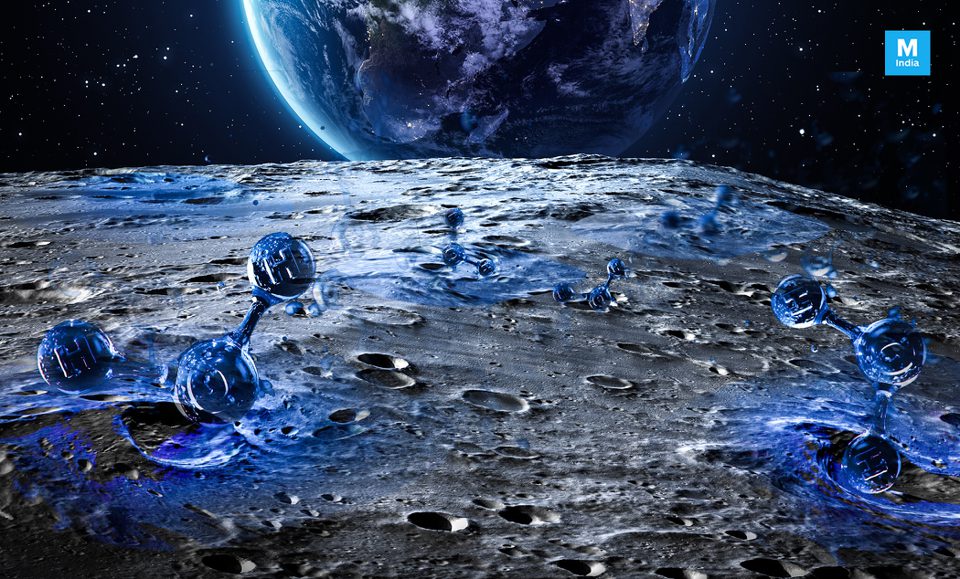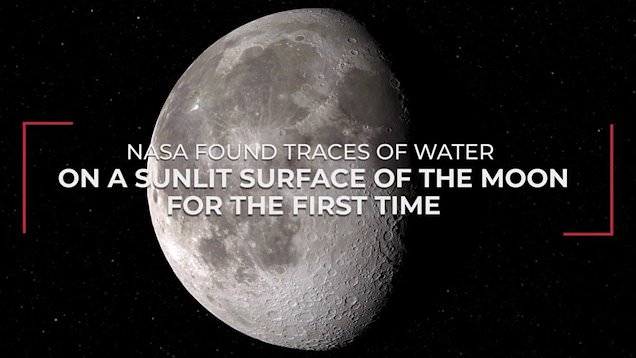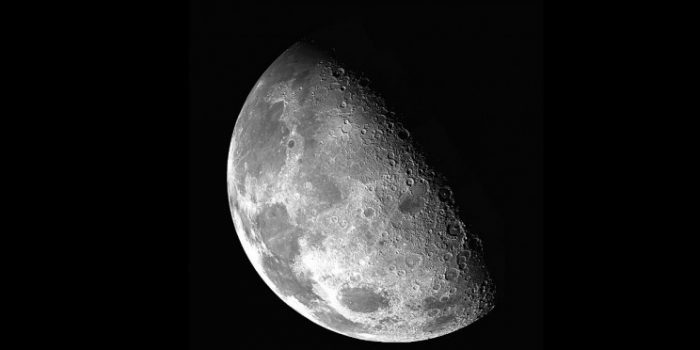NASA’S website had a live teleconference on Monday, Oct 26th, at 12 pm EDT and the existence of water on Moon’s sunward facing surface was claimed by the officials during the live stream. Stratospheric Observatory for Infrared Astronomy (SOFIA) confirmed this recent discovery.
The scale of the individual water molecules found on the Moon’s Southern Hemisphere was too small to create water puddles or blocks of ice. These molecules were found surrounding the Clavius Crater.
“Hydrogen molecules that were spotted on the sunlit side of the moon in the past, are associated with being water molecules,” said Paul Hertz, astrophysics division director, NASA Headquarters, Washington.
SOFIA is the sole telescope on or off-world competent enough to give remote access to this distinctive, 6.1-micron fingerprint of water. It’s an airborne conservatory that can go as high as 42,000 ft (12,800 m), reaching an altitude higher than the 99.9% water vapor in Earth’s atmosphere and shuts out infrared light from reaching Earth from space.
These current studies of the recently discovered moon water will balance NASA’s leading assets. They will also support NASA’s upcoming Artemis mission, working to take the first woman and the next man to the moon in 2024.
SOFIA’s first moon capture was supposed to be a test case, said Naseem Rangwala, who is a Project Scientist at NASA’s Ames Research Center in Silicon Valley, California. “Although this test attempt ended up being much more than our initial expectations,” she added. Along with her team, she plans more flights with SOFIA to collect additional data for water’s existence on the Moon.

“These inspections will increase the data for NASA’s upcoming moon rover, and the Viper mission will gather to make the first water-resource map of the moon,” described Rangwala.
“It’s much easier to travel when you don’t need to take everything with you that you may end up needing for the whole trip,” stated Jacob Bleacher, NASA’s chief exploration scientist of the Human Exploration and Operations Mission Directorate. We depend on gas stations or rest sites, allowing more efficient packing behavior, here on Earth.
To keep up with deep space exploration, water is a crucial resource — it is used for oxygen to breathe, a fuel supply, and of course, for drinking. “But water being heavy, therefore, makes it expensive to launch from the surface of the Earth,” said Bleacher. If there is less water to carry, it leaves ample space on the space vessel to carry more useful amenities. “By learning more about the water present on the moon, we can determine its usage in science exploration and study,” he said.
We’ve confirmed water’s presence in the coldest and darkest environments of the moon’s permanently shadowed craters. These environments are still harsh and difficult to reach and hard to work in for prolonged periods of time.
The SOFIA captured demonstrate we might find usable water other than these hard-to-reach craters. “Learning more about that water, the quantity in which it exists, whether it shifts around” is critical for our upcoming revisit and exploration of the moon, described Bleacher.
Casey Honniball, a Ph.D. fellow from NASA’s space flight center, said for a decade now, NASA scientists have been familiar with the presence of hydrogen on the moon.
With SOFIA’s help, the team studied the moon’s surface at a wavelength of 6.1 microns, which let them distinguish between water and other substances containing hydrogen.
Honniball said that Clavius is one of the largest craters that can be seen from Earth. Her team found water molecules at a concentration of about 100 to 400 parts per million, which are the same as a 12 oz bottle of water within a cubic meter of the lunar soil volume.
While explaining further, she classified them as water molecules that are spread apart, hence, not forming ice or liquid water.
The presence of water could be a result of the solar wind, or another possibility could be of micro-meteor impacts causing chemical reactions with hydrogen-based molecules.
Technically, in the absence of a protective atmosphere, water on the moon should be lost. However, Honniball and her colleagues think water molecules might be trapped under tiny glass shields formed due to micro-meteor impacts.
The water molecules consist of one oxygen and two hydrogen molecules, and it was detected on the moon via SOFIA’s infrared spectrometer. This brings in new exciting questions regarding the creation of water on the lunar surface.
For the first time, water is confirmed present on a sunward-facing surface of the moon, explained Hertz. In the past, several studies suggested all water on the moon only existed inside the moon’s permanently-shadowed craters.

One of the major contradictions regarding the latest discovery of water present on the moon’s sunward-facing surface is important because it runs opposite to scientists who have been saying water under direct sunlight would vaporize.
The latest revelations tell that the water might be distributed across the lunar surface and might not be limited to the cold shadowed places close to the lunar poles, where water had been discovered previously as well.
This latest discovery comes when NASA’s ongoing study of the moon aims to extend human space exploration. NASA’s Artemis program is said to send the first woman and another man to the lunar surface in 2024. These initial efforts are preparations for humankind’s next giant step towards Mars sometime in the 2030s.
Hertz said the moon study also helps us come to know the history of the inner solar system.


